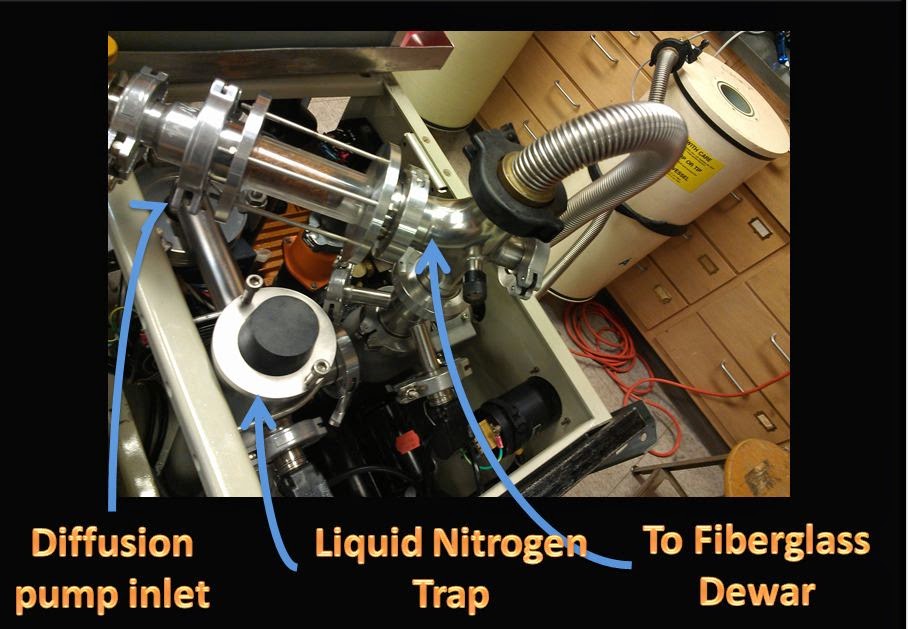Lab Book 2014_05_20 Hamilton Carter
Summary
The fiberglass Dewar vacuum held. The vacuum inlet was plugged to prevent any possible leaks there, and it was stored. A 480 V three phase outlet for the magnet power supply was located.
The fiberglass Dewar vacuum held. The vacuum inlet was plugged to prevent any possible leaks there, and it was stored. A 480 V three phase outlet for the magnet power supply was located.
4:30 AM Liquid
Nitrogen Trap Refilling
Refilled the liquid nitrogen trap that prevents oil vapor
from the diffusion pump from migrating opposite the intended vacuum flow into
the Dewar’s vacuum jacket. The liquid
nitrogen condenses the oil vapor in the bottom of the small container, (the
trap), that it cools.
The trap took two and a half cups of liquid nitrogen to
refill. The vacuum and leak detector
readings before and after the fill are shown below.
There was no noticeable improvement in the vacuum and leak
readings before and after the Dewar refill.
This makes sense because the Dewar still had liquid nitrogen and was
performing its intended function.
Vacuum and leak readings
throughout the day
|
Time
|
Vacuum
|
Leak
|
|
4:40
|

|

|
|
4:46
|

|

|
|
11:09
|

|

|
|
12:40
|

|

|
|
15:44
|

|

|
NOTE: The glass Dewar
is at room pressure and can be safely moved.
It’s not possible to check that the vacuum inlet valve doesn’t
leak. To prevent a possible lek even
when the valve is shut, a plug was inserted over the inlet valve.
I located a three phase 208 v plug for the magnet power
supply. I need to find a plug that will
fit this:



Comments
Post a Comment
Please leave your comments on this topic: